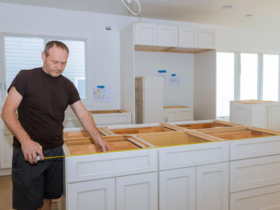When it comes to drainage issues, damaged drain pipes are among the most inconvenient. Aside from being notoriously difficult to notice, leaky drain pipes harm the ecosystem by polluting the soil.
Previously, the only option to repair broken drain pipes was to excavate and replace them, which was a time-consuming and costly procedure.
Pipe replacement was notoriously tricky because the damaged pipelines were frequently buried metres beneath the ground. Occasionally these can be concealed behind infrastructure such as roads, driveways, or retaining walls, but the property owner is responsible for drainage upkeep and repair.
However, thanks to modern technology, drainage pipes can now be repaired using drain relining. A relatively simple and less expensive procedure compared to replacing pipes.
What Exactly Is Drain Relining?
Drain relining is a system for repairing damaged drainage pipes. It involves inserting a new pipe, known as a lining, into an existing damaged pipe rather than excavating it.
It is a clever technology that negates needing to dig up old pipes but employs a drain sleeve similar to glass-reinforced plastic. This repair is incredibly economical if you have lagged and insulated underground pipes, as the insulation will not be damaged.
Drain relining can be used to repair open or leaking joints and circumferential or radial fissures caused by blockages. It is also particularly efficient in fighting root infiltration, a problem with ancient clay drainage pipes.
Inspection of the drain relining process
Inspecting drainage pipes is the first step in the drain lining procedure. Using CCTV surveying allows installers to see the problem without digging up pipework. This inspection determines the location and degree of any pipe damage.
Debris cleaning
Following the examination, the pipes are cleaned to avoid any obstructions during the relining process. The intrusions (tree roots) are removed with a robotic cutter that can cut through steel and concrete. Following that, a high-pressure water jet is used to clean any debris from the pipe.
Method
There are two methods for installing the linings. The first method is a process called inversion. A resin is put into the drain liner and repeatedly rolled to ensure that it is evenly distributed on its body. It is then placed into the damaged pipe using inflated airbags or water pressure to form the liner to the pipe walls.
It might also be done using GFRP UV pipelining using ropes and winches; the pipelining is dragged into the damaged pipe.
Both procedures ensure that the liner matches the pipe’s surface perfectly, ensuring proper drainage.
Drain repair costs have been drastically reduced.
Because pipe relining does not need excavations, heavy equipment is not required. This lowers equipment and labour costs, making it less expensive than typical replacement procedures. In addition, the lack of infrastructure replacement costs on roads, driveways, and retaining walls contributes significantly to the cheap cost of pipe relining.
Normal activities with minimal disruption
Because pipelining involves little machinery and minimal excavation, operatives can complete it without causing significant disruption to regular activity. It is possible to schedule it around commercial trading, shift schedules, or household activities.
High-performance repairs
The rapidity with which broken pipes are restored is the second significant advantage of pipe relining. Larger jobs that would ordinarily take weeks are finished in a matter of days. Smaller jobs that would ordinarily take days are now accomplished in hours.
Excellent flow rates
Because it has a low friction surface, the lining utilised in the process helps water flow.
Sealing all leaks and cracks
The CCTV survey locates all probable breaks within the pipe that would have been missed otherwise. As a result, even places where no leaks are detected are serviced.
Permanent repair
Drain relining ensures permanent structural integrity because pipelining often has a lifespan of more than 50 years. This is very useful for clay drain pipes.
No problem with bends or offset joints
Some varieties of lining are flexible enough to easily navigate bends.
Differing sizes available
Lining can be installed in pipes ranging in diameter from 50mm to over a metre.
Any length
Drain relining is not affected by environmental factors or drain accessibility. The relining can be done with a single long lining or multiple smaller overlapping sheets. It is worth noting that a single lining can span more than 500 metres.
When Should Drain Pipes Be Relined?
Unfortunately, knowing when pipes are damaged and need to be repaired is impossible. Most pipes are buried underground, out of sight of a casual observer.
There are, however, a few warning signals to look for to determine when your pipes need to be relined. They are as follows:
Nasty smells
Leaky sewage lines eventually cause foul odours in the air, which is usually the first indicator of a drainage problem. Such odours are created by either waste products or mould and mildew, which thrive in wet areas.
Wet floors
Wet flooring is also an obvious sign of leaking drainage lines. Most plumbing networks run directly beneath the house to connect to the main sewer line. Leaking water pools around these pipes, affecting the floors and discolouring interior flooring if left unchecked.
Rodents
Rats and vermin are drawn to the rotten odours of leaking sewer lines in waste drains. As a result, their appearance in your garden usually indicates that your drainage pipes need to be relined.
High water bill
Damaged pipes can sometimes be the cause of a higher water bill. To be sure, turn off all water sources and check the meter’s reading. Other warning indications include:
- Blockages.
- Rust or debris in the water.
- Fissures in the walls.
- Plants’ unusual growth.
- Sludge in the bath or shower.
Is Drain Relining Safe for the Environment?
As previously stated, broken pipes allow dangerous substances to enter the soil and groundwater. This could pose significant risks to plant and animal life and humans in the long run.
Pipe excavation produces additional environmental impact by causing considerable damage to buildings, fences, trees, and gardens. It may further aggravate the leak because excavation equipment frequently ruptures damaged pipelines. And where such pipes carry harmful chemicals, they are released into the soil more quickly.
On the other hand, Drain relining is ecologically favourable because the resin and lining are often approved to be environmentally friendly before being utilised commercially.
Furthermore, the method is ideal for delicate environments such as streams and rivers. It is less likely to cause damage to existing infrastructure.






